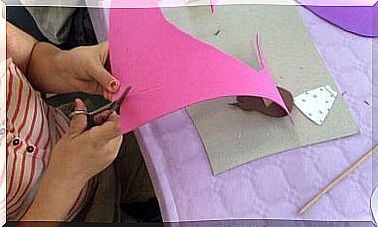The Benefits Of Yoga For Children

Believe it or not, children’s yoga is becoming more and more popular and can be used as a way to improve children’s health.
Until recently, it was believed that the most important part of children’s lives was their education. But it is now known that activity is essential for children’s development as well as mental health. But what kind of exercise should children do?
The traditional answer to this is football, basketball, or other similar sports, but there is another world outside of these.
Oriental philosophies come with caring for the whole body, which seems to be of interest to people more and more. This is reflected in the increased popularity of yoga, but is it also good for children?
In this article, we will talk about the benefits of yoga for children.
When should children start yoga?

Given the characteristics of the children, it would be best for them to start yoga at the earliest around the age of 4. By this time, the body is already stronger in structure, and the psychomotor abilities of children have developed somewhat. They are aware of their own body and have better control over it.
Some people wonder if yoga is the right sport for all kinds of children. The answer is yes.
Both introvert and more dynamic children benefit from yoga. Even slightly different children find yoga useful. The key is to find the group that best suits your personality.
Yoga involves various methods aimed at correcting imbalances or reinforcing imperfections in the body. But there are benefits to all kinds of yoga, which we’ll talk about next.
The benefits of yoga for children
They learn to develop themselves without competition

Yoga is one of the few sports where neither wins nor loses. Yoga competitions are also not seen on television. So if you compare yoga to other sports, it is the only one of its kind.
Learning this is essential for children. It promotes self-development without the need to be better than others or to win an award.
What is essential for happiness is the knowledge that satisfaction comes from within and does not depend on the recognition given by others.
Yoga promotes children’s self-awareness
When we talk about self-knowledge, we often think of the inner world. While it is an essential part, a conscious relationship with your own body can also help a lot.
Awareness of one’s own boundaries and a sense of the ability to overcome them gives a sense of power that means better self-esteem.
Through yoga, we feel every muscle, every bone and every breath.
This increases the likelihood that we will take care of ourselves and respect the functions of our body. In addition, we learn to respect the condition of others with the same seriousness, for we already know that they are not our enemies, but equal with us.
Children learn to recognize and manage stress

Perhaps the most important thing is “identification” because without perceiving stress, it cannot begin to be managed. Relaxation is a philosophy associated with yoga, and practicing it itself requires relaxation. If you are not mentally relaxed, you will notice a difference when you start practicing yoga.
By noticing this difference, you realize that there was a feeling inside that made you feel bad. At the same time, yoga will find a way to deal with that feeling.
As adults whose yoga was not in vogue in their youth, we know how difficult it is to learn as a parent. It is a completely different thing to learn this skill as a child. It is a fundamental tool that helps a child grow calmly and choose the best for himself.
These are the main benefits of yoga for children. As you can see, yoga helps them grow in better conditions and respect themselves as well as their environment.









